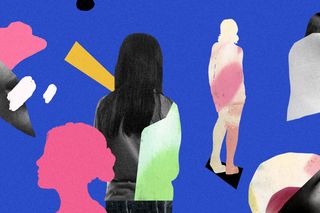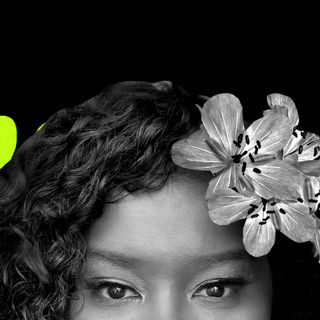
The Link Between Neurodivergence and Queerness, Explained
The struggle to fit within a society that idealizes neurotypical brains can lead neurodivergent individuals to question a multitude of social norms — including those around gender and sexuality.

“Coming out” is a phrase we tend to associate with individuals from the LGBTQ+ community. But it’s a phrase that often captures an integral milestone in the journey of self-acceptance that many neurodivergent individuals undertake, too, especially if they’re diagnosed late.
Interestingly, the journeys of coming to terms with one’s neurodivergence — in a neurotypical world — and of accepting one’s queer identity — in a heteronormative society — aren’t just parallel. On occasion, they merge as well. Studies suggest that individuals with gender and sexual identities outside the cis-hetero binary were also three to six times more likely to have a diagnosis of autism. This excludes autistic individuals who remain undiagnosed, suggesting that the overlap could, in fact, be greater. Researchers have also observed higher rates of OCD and ADHD diagnoses among queer individuals — reiterating the overlap between neurodivergent and LGBTQ+ identities.
“[Their] suggestion should not have shocked me. Autistic is one of the most trans things you can be,” Jude Doyle, a journalist and author, wrote of their reaction to being suggested by their therapist that they might be autistic. “It was the strangest feeling; I’d spent years obsessed with my sexuality or my gender, convinced that naming my queerness would explain everything different about me, and here, at the end of that road, was one more obvious thing I’d been ignoring.”
Research doesn’t yet offer a clear reason to explain the overlap between the communities. One theory suggests that the greater gender-and-sexual diversity within the neurodivergent population results from challenges in navigating sociocultural norms around mainstream notions of gender and sexuality — like gender roles and expressions, and sexual orientation and attraction. That is, due to the differences in the way a neurodivergent person experiences life, they may struggle to conform to these norms, inspiring them to explore beyond traditions and express themselves in newer ways that resonate with them.
“You could then understand the co-occurrence as perhaps a more honest expression of underlying experiences,” John Strang, director of the Gender and Autism Program at the Children’s National Hospital in Washington, D.C., told Spectrum News.
Related on The Swaddle:
Further, the struggle to fit within a society that idealizes neurotypical brains can also lead neurodivergent individuals to question a multitude of social norms — including those around gender and sexuality. In other words, the alienation they experience — be it due to autism, a learning disability, a personality disorder, or even bipolar disorder — can cause them to feel like an “outsider” at all times, inducing a greater openness to alternate ideas of gender and sexuality. Upon digging further, they may end up with the conclusion that they are indeed cis-gendered and heterosexual. But in the event that they aren’t, the exploration prompted by the neurological differences that denied one the sense of belonging can inadvertently become the key to discovering their gender and sexuality.
Many neurodivergent people can also feel both sensory and emotional stimuli — including attraction and arousal — more deeply, which can also drive them to explore their sexuality more. While that doesn’t automatically mean they’d turn out to be queer, it does point to them being more open to embracing a queer identity, if their exploration does lead them to that conclusion.
And the fact that neurodivergent groups do often include members of the LGBGTQ+ community — and vice versa — means that members of these groups have access to resources and one another’s lived experiences, which helps them understand their identities better. “I’m an autistic, bisexual female… I have always found it challenging to fully define my sexuality. When I accessed autism support groups following my formal diagnosis in 2020, I quickly realized that this fluid or harder-to-define sexuality is common within the autistic community, as is genderfluidity,” wrote Sofie Day.
However, the unfortunate reality of possessing multiple marginalized identities is that it is often accompanied by a multitude of bias-bred barriers to social acceptance, self-expression, and even healthcare. The stigmas bleed into each other, reinforcing the challenges of navigating life in an ableist, homophobic, and transphobic world. As Doyle explains, “When a transphobic world does acknowledge the connection between autistic and trans communities, it’s weaponized… Thus, many neurodivergent trans people can land where I did — obsessed with being or seeming ‘normal,’ rather than figuring out what they need.”
This weaponization comes in the form of anti-trans “activists” floating theories that “invoke an image of a naïve, disabled, vulnerable autistic girl being duped to transition for the trans agenda,” Juno C, an autistic person, wrote in Cripple Media. “After all, how could we be expected to know any better? We’re autistic.” Theories like this aren’t just harmful but also fortify the rhetoric about autistic individuals being “incapable” of making their own choices because their disability somehow makes them “lesser than” their able-bodied, neurotypical counterparts. It is, then, used to coddle neurodivergent individuals and deny them agency — in this instance, even over their own bodies and identities.
Related on The Swaddle:
‘Masking’ for Years Can Leave Autistic People Confused About Who They Really Are
Invalidating one’s gender and sexual identity can also wreak havoc on people’s mental health and, at times, even cost them their lives — such is the benevolence of transphobic saviors of neurodivergent individuals. Kayden Clarke, a trans man, who was denied testosterone by his doctor until his autism was “cured” — even though it’s not a “disease,” and hence, not “curable” — suffered from anxiety, depression, and PTSD. He also eventually attempted to die by suicide. In 2016, while responding to his crisis call, instead of saving his life, the police shot him to death, highlighting the double whammy of the stigma neurodivergent individuals from the LGBTQ+ community face every day. “My [child] died for asking for help… [R]egardless of what [he] was thinking, what [he] was doing, [he] wasn’t posing a danger to the community.”
Unfortunately, being denied gender-affirming care until one is “cured” of their autism is a far too common experience, despite evidence of gender-affirming care improving people’s mental health — including bringing them back from the brink of suicide. “It’s really, really distressing to read sometimes, where you have people who have very strong gender dysphoria and want to transition, and their therapist says, ‘Well, we need to first cure your autism before we transition,’ which is wrong on all levels… [B]oth of these things can co-occur, and just because these things co-occur does not mean that one should be denied,” explains Varun Warrier, a research associate at the University of Cambridge in the U.K.
At present, a state in the U.S. is banning gender-affirming care for individuals without “comprehensive[ly] screening” them for autism. The fact that it’s difficult to locate mental health professionals who understand how autism manifests in adults, coupled with the screening process requiring interviews with one’s guardians (who might, in the case of a trans individual, be transphobic and, therefore, estranged and uncooperative), may hinder one access to the support they might need. Not to mention, diagnostic assessment for neurodivergence can be expensive, too — denying low-income trans individuals access to the care they may desperately need. In other words, the intersection of neurodivergence with marginalized identities like race, ethnicity, and socio-economic status is challenging enough; when we add queerness to the mix, it serves merely to amplify the stigma.
An approach centered around the creation of more inclusive and accessible environments for all individuals — irrespective of how many of their identities diverge from the norm — is the only way to truly embrace the diversity of humankind and move forward. While the intersection of neurological and gender-and-sexual diversities can manifest unique challenges, it also represents an eclectic tapestry of human experiences — deserving, at the very least, of support and recognition, until we’re able to truly celebrate the richness of this diversity, as a society.
“Identity is a complex thing. We are all made up of multiple identities — some of them diverse, some of them associated with dominance [or] power. For many, their diverse identities are visible, and for some, invisible. When you live with an invisible diverse identity, you have the privilege of choosing to ‘pass’ or ‘come out,'” writes Megan Anna Neff, a clinical psychologist, on her journey of coming out as autistic. “It is a complex decision when you choose to make an invisible identity visible. Today, I chose to leave my neurotypical passing self, and publicly embrace my autistic identity.”
Devrupa Rakshit is an Associate Editor at The Swaddle. She is a lawyer by education, a poet by accident, a painter by shaukh, and autistic by birth. You can find her on Instagram @devruparakshit.
Related


Healing the Trauma of Caste, With Thenmozhi Soundararajan
